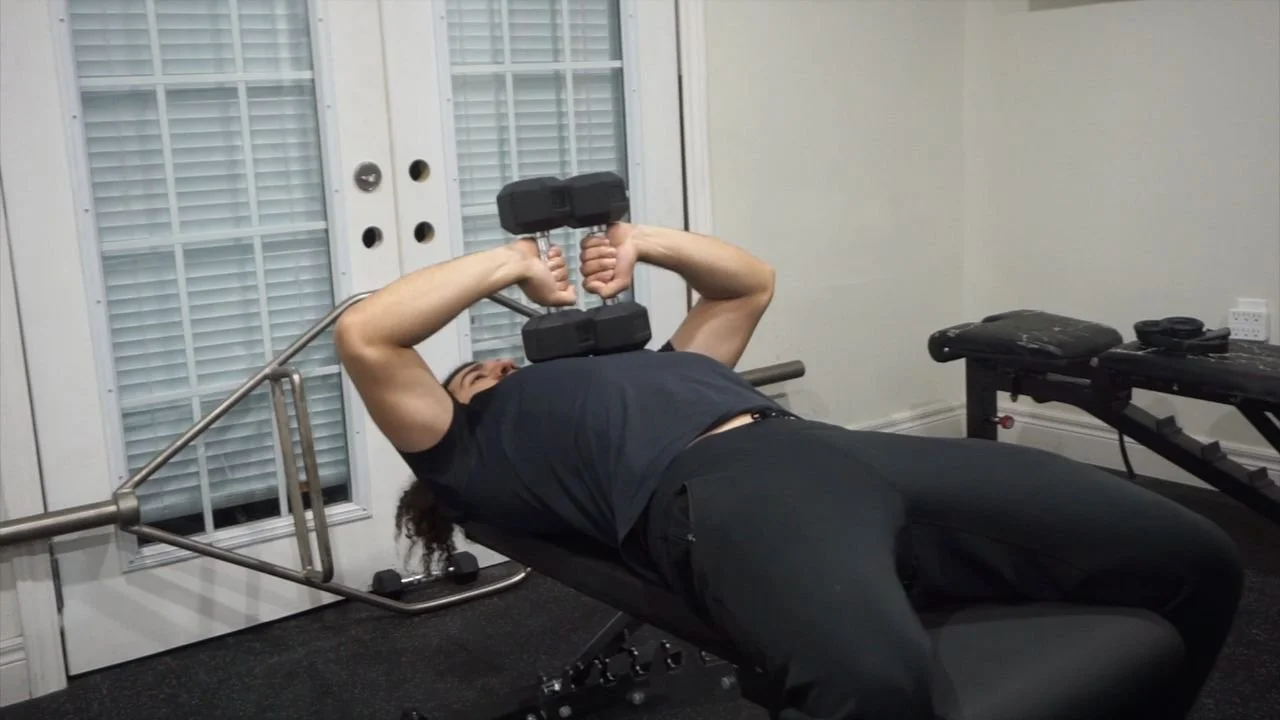Exercise Tutorial: Tate Press
Table of Contents
What Is a Tate Press
The Tate Press was created by Dave Tate, a well-known powerlifter and strength coach. The most common reason for performing the Tate Press is to improve performance during the Bench Press. Some lifters may struggle at the top of the Bench Press when the Triceps become engaged. The Tate Press was designed to target and increase strength in the Triceps, which will ultimately help to improve your Bench Press.
How to Do a Tate Press
The Tate Press can be performed laying down on a bench, or on the floor. You will need a pair of dumbbells to perform this exercise.
Follow the steps below to learn how to do a Tate Press!
Select your dumbbells and lie down on your back on a flat bench with your feet on the floor.
Push the dumbbells up into a position that is like the top of a Bench Press. This means that your arms are extended above the shoulder, and your palms are facing forwards. The ends of each dumbbell should be close together.
Inhale and lower the dumbbells straight down to the chest. Your elbows will bend and come out to the side. Your palms should always be facing the same direction. Essentially the dumbbells will go from a horizontal position, to a vertical position.
Exhale and press the dumbbells back up as you extend the elbow. Repeat this movement for the required number of reps and sets.
You have now learned how to do a Tate Press!
Tate Press Form
There are a few key things to remember when performing the Tate Press that will help you maintain the proper form. First, your palms should always be facing forwards. When you lower the dumbbell towards the chest, your thumbs will come together as you flex the elbow. This will ensure that your palms are in the correct position.
As well, remember that it is only the forearm that moves during the Tate Press. The upper arm will remain in a fixed position. Finally, during the Tate Press, do not let the dumbbells rest on your chest, and do not lock out the elbows in the starting position.
Tate Press Benefits
The main benefit of the Tate Press is that it will increase the muscular strength and size of the Triceps. This is beneficial for powerlifters and those who are looking to improve their Bench Press as the Triceps play a key role in this exercise. As well, the Tate Press will also help to add definition to the arms and provide variety in your exercise routine.
Tate Press Muscles Worked
The Tate Press primarily targets the Triceps, but will also engage the chest and shoulders.
Tate Press Alternative
There are many alternatives to the Tate Press that will also target and strengthen the triceps. Click on each one to view a complete exercise tutorial of each Tate Press alternative.
How to Dumbbell Tate Press
You will need dumbbells to be able to complete the Tate Press exercise. If you have never performed the Tate Press before, we suggest starting out with lighter dumbbells so that you can perfect the movement of the Tate Press first, before increasing your load. Proper form is essential in any exercise to avoid injury and to achieve all of its benefits! Do not be afraid to start low and go slow when learning a new movement!
About the Dave Tate Bench Press
Dave Tate is a popular powerlifter and strength and conditioning coach. He is well known on the internet for writing various articles and books that help teach individuals how to improve in the fitness world. After successfully publishing a free squat manual, Dave Tate set forth to create a free Bench Press manual. This manual encompasses 15 sections that will help you become a better presser including bench press tips, suggestions and training plans.



